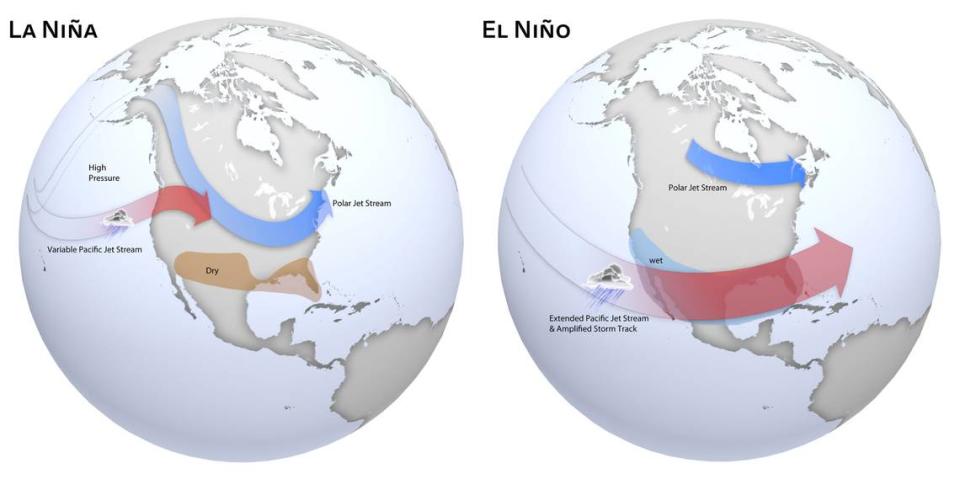La Niña’s wrath could mean drought conditions, stronger hurricanes in Georgia this summer
The effects of weather occurrences El Niño and La Niña have made their way to Georgia. And it looks like summer is when we’ll feel them most.
While the El Niño phenomenon is mostly known for affecting the West Coast, where the Pacific Ocean has the biggest influence on weather systems, this new 2023-2024 cycle has echoing repercussions across the whole United States.
What is El Niño and La Niña exactly?
The El Niño pattern of weather results in warmer ocean temperatures while its counterpart, La Niña, produces colder ocean temperatures.
El Niño and La Niña are opposite phases of a naturally occurring climate pattern collectively known as the El Niño-Southern Oscillation (ENSO). This occurs in cycles every three to seven years, but this cycle has been the most record-setting in recent years.

Weather changes, thanks to El Niño
The El Niño leg of the pattern started in December and has run its course, causing some of the most erratic weather to date. Anybody remember how long it stayed cold this past winter?
According to Vox climate coverage, the outgoing El Niño event has been among the strongest the Earth has ever experienced. It has fueled “wildfires, droughts, and floods in South America. It bent the jet stream, trapping heat over the southern United States last summer, and ended the year with the warmest winter on record for much of the country.”
Welcome to Georgia, La Niña
The ENSO, as it was called, is most likely on the way out to make room for its counterpart, La Niña. Weather experts predict the colder waters in the Pacific could ultimately lead to drought conditions in the southern U.S. and a warmer, drier winter in Georgia, Alabama and South Carolina.
One of the more pressing issues, experts warn, is the threat of a more severe hurricane season. Hurricanes are a result of two main factors: water temperature and air stability — and La Niña affects both.
Ocean temperatures were higher than normal back in February, which bodes ominous for the upcoming summer. Researchers at Colorado State University predict 23 named storms this year, while the University of Pennsylvania anticipates 33, the highest ever projected.
Prepping for La Niña
Brace for dry conditions by embracing water conservation, planting drought-tolerant plants and follow burn local protocols.
Do an expectation of your current HVAC system; it’s going to be super hot.
Get your hurricane preparedness kits in check. Review emergency plans; buy batteries; keep some fresh water on hand.
Make plans for your animals to have plenty of fresh water and shade for the summer months.
Which services should be tipped, Georgia? Take our poll on digital tipping

